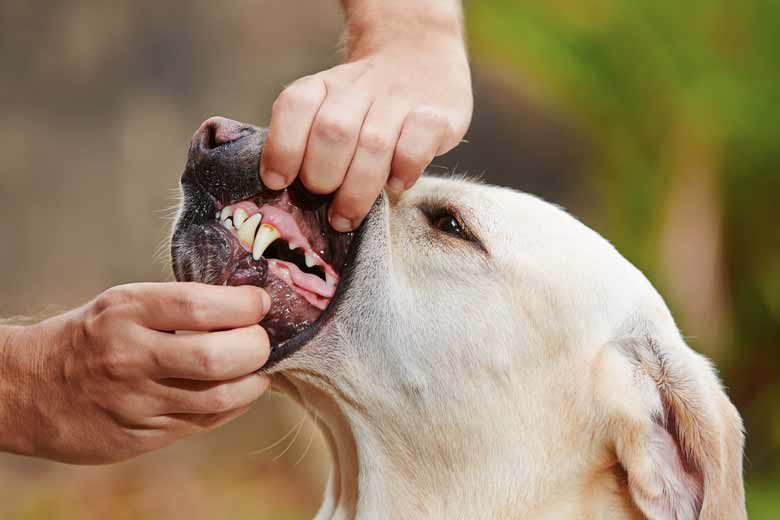
Periodontal disease is one of the most common conditions that veterinarians see in general practice.
It may be surprising to know that more than 85% of dogs and cats >4 years of age have periodontal concerns. For the vast majority of animals, good home care regimes and regular check ups at the vet can help to prevent the development of periodontitis – an incredibly painful condition that can contribute to a reduced quality of life.
Periodontal disease starts when plaque (an adhesive fluid composed of bacteria) forms on the tooth surface. Plaque starts forming two days after dental cleaning and, if not removed, mineral salts in the food precipitate to form hard dental calculus.
Calculus is irritating to the gingival tissue, contributing to gingivitis. This changes the pH of the mouth and allows bacteria to ‘track’ up into the deeper structures of the tooth and tooth root. The term ‘periodontal disease’ refers to inflammation of some or all of the tooth’s support structures.
If left untreated periodontitis causes loose, painful teeth and internal disease in more advanced cases. Animals with periodontitis often have very smelly breath (otherwise known as ‘halitosis’) and may have trouble eating.
So, we all now know what periodontal disease is – but how can we prevent and treat it?…
- Daily tooth brushing. This is the gold standard of dental care for pets. There are specially designed doggy toothpaste (usually beef flavoured) and toothbrushes available. Alas, for many clients this may not be their ‘cup of tea’ or, they may simply not have the time to implement daily teeth-brushing (even 2-3 times per week is better than not at all). There are always other options available such as:
- Feeding a high quality (premium) diet – ideally a veterinary dental diet. Veterinary dental foods have specially-designed kibble that helps to manually break down plaque and calculus. Furthermore, they contain specific nutrients that effectively reduce plaque deposits.
- Avoiding soft and tinned foods. These foods adhere to the tooth surface allowing for plaque and calculus formation.
- Raw bones – ensure that bones are large and RAW (cooked bones shatter – and shards can get caught in/perforate the gastrointestinal tract). Raw cow/sheep femur bones are ideal. Bones come with their own risks too – bone splinters, tooth fractures, gastroenteritis, pancreatitis, obstruction – supervision during chewing and disposal afterwards is always recommended.
- Dental chews, pigs ears, greenies e.t.c. These products are all good for dental health – BUT can be high in calories. If your pet is on a diet, make these an ‘occasional’ treat.
- ‘Healthy mouth’, a veterinary product designed for preventing the adherence of plaque to your pet’s teeth. Ideal for teeth with minimal plaque/calculus build-up to slow down the progression of dental disease. I always recommend this product for any animal that has just undergone a dental procedure at our clinic. It’s an all-natural product that is incredibly easy to use – simply add it to your pets drinking water. Most animals like the taste and take it easily. For those ‘fuss-pot’ cats and dogs out there, it even has a money back guarantee.
- Regular check ups at the vet to assess dental health. This is especially important for small-breed dogs, who are predisposed to developing dental disease.
Unfortunately, once periodontal disease is at an advanced stage veterinary intervention is indicated to manually remove plaque/tartar and extract loose (diseased) teeth. Unlike humans, a general anaesthetic is required to perform a dental procedure in dogs and cats. Early intervention is always better than late – in more severe cases, some animals may require multiple tooth extractions which adds to costs and anaesthetic time. For more information on this procedure please read the hand out ‘My pets needs a dental’.
If you have any questions, or would like us to perform a dental check (dental checks are free!) please give us a call – we are always happy to answer any questions regarding your pet’s health!